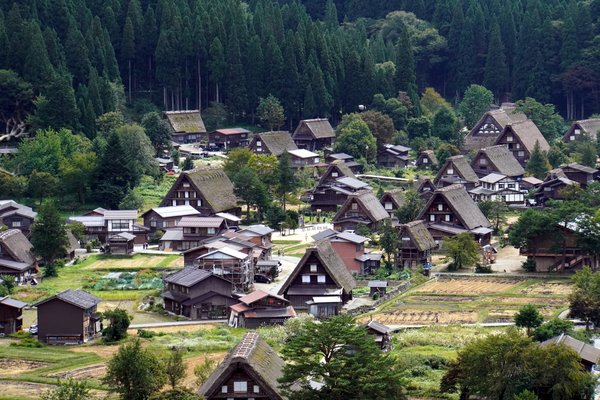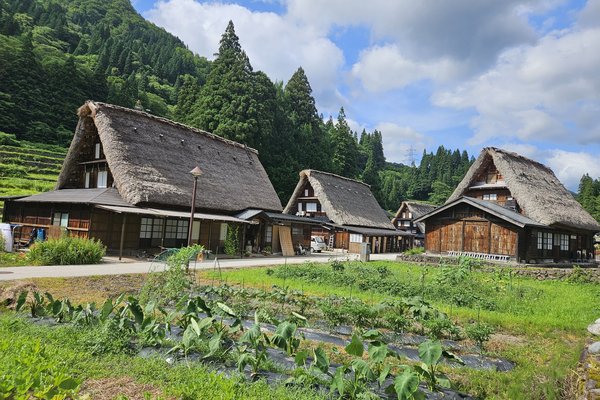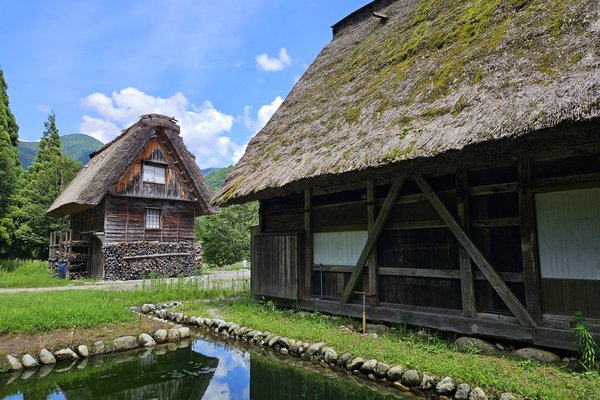Japan
Shirakawa-go and Gokayama
The Historic Villages of Shirakawa-go and Gokayama are traditional Japanese settlements.
The three villages lie in isolated valleys, with the inhabitants growing mulberry trees and rearing silkworms. Their characteristic farmhouses, Gassho-zukuri, have triangular-shaped roofs so snow can slide off easily. They are also large enough to store silk products.
Community Perspective: the best time to visit is in winter, with the thick layers of snow on the roofs. From the 3 included villages, most reviewers visited Ogimachi in Shirakawa-go, which sees a lot of tourists in general. Hubert describes Ainokura, where he also stayed the night.
Site Info
Official Information
- Full Name
- Historic Villages of Shirakawa-go and Gokayama (ID: 734)
- Country
- Japan
- Status
-
Inscribed 1995
Site history
History of Shirakawa-go and Gokayama
- 1995: Inscribed
- Inscribed
- Type
- Cultural
- Criteria
- iv
- v
Links
- UNESCO
- whc.unesco.org
- Official
-
- ml.shirakawa-go.org — Shirakawa village
- Related
-
- japan-guide.com — Japan Guide coverage of the area
All Links
UNESCO.org
- whc.unesco.org — whc.unesco.org/
Official Website
- ml.shirakawa-go.org — Shirakawa village
Related Resources
- japan-guide.com — Japan Guide coverage of the area
News Article
- Oct. 7, 2025 asahi.com — Bear attacks Spanish tourist in Shirakawago UNESCO village
- May 14, 2023 asahi.com — Re-thatching of steep roofs in Shirakawa-go back after break
- April 16, 2015 ajw.asahi.com — Historic Shirakawa hopes to build on recent surge in foreign visitors due to cheap yen
Community Information
- Community Category
- Urban landscape: Asian
Travel Information
Recent Connections
-
Water Mills
Shirakawa-go contains small-scale woode…
-
Built in the 19th Century
Oldest remaining ones date from the 19t… -
World Biosphere Reserves
Mount Hakusan (extension 2016)
Connections of Shirakawa-go and Gokayama
- Trivia
- Ecology
-
-
Saltpeter
"Making saltpeter, an ingredient in gunpowder, was an important industry for the region during the Edo Period." There's a Saltpeter museum in Suganuma village
-
- Architecture
- World Heritage Process
-
-
Perfect Inscriptions
1995
-
- Religion and Belief
-
-
Shinto
The guardian deity of the Shirakawago's Ogimachi village is housed in the Hachiman Shinto shrine, and Ainokura is at Jinoshi Shrine.
-
- Human Activity
-
-
Silk Manufacture
The inhabitants "subsisted on the cultivation of mulberry trees and the rearing of silkworms" (AB ev) -
Rice cultivation
The house lots are surrounded by irrigated rice fields and city-crop fields, also small and irregular in shape. (AB ev)
-
- Constructions
-
-
Water Mills
Shirakawa-go contains small-scale wooden mills used by the community for grain and local fodder. (link)
-
- WHS on Other Lists
-
-
Most beautiful villages
Shirakawa is in the "Nihon de mottomo utsukushii mura rengō" (Association of The Most Beautiful Villages in Japan) -
World Biosphere Reserves
Mount Hakusan (extension 2016)
-
- Timeline
-
-
Built in the 19th Century
Oldest remaining ones date from the 19th. This specific way of construction started "from the late 17th century until the 1970s; its requirement of large enclosed spaces for silkworm beds and storage of mulberry leaves" (AB ev)
-
News
- asahi.com 10/07/2025
- Bear attacks Spanish tourist in Sh…
- asahi.com 05/14/2023
- Re-thatching of steep roofs in Shi…
- ajw.asahi.com 04/16/2015
- Historic Shirakawa hopes to build …
Recent Visitors
Visitors of Shirakawa-go and Gokayama
- AC
- Adam Hancock
- aj
- Alexander Lehmann
- Alexander Parsons
- Alex Goh
- Alikander99
- Ammon Watkins
- Aspasia
- Astraftis
- Atila Ege
- Axel Hansson
- Bamse
- BaziFettehenne
- Bill Koo
- Bill Maurmann
- Casey
- Caspar
- Celina Nanbara
- chenboada
- chiuliqi
- Christoph
- Claire Bradshaw
- Corinne Vail
- CugelVance
- cutecid
- cwthong
- czesioszpachelka
- Deffra
- Elaine McArdle
- Elena Y
- Els Slots
- Errol Neo
- Eva Kisgyorgy
- Fan Yibo
- Farinelli
- Federico P.
- Frédéric M
- Frederik Dawson
- FS
- Hammeel
- Harald T.
- henrik_hannfors
- Hubert
- Iain Jackson
- Jasam
- jballard650
- Joel on the Road
- Jonas Kremer
- Jon Bauer
- Jon Opol
- Joyce van Soest
- KeithBailey
- Ken DJ
- Kurt Lauer
- Leonie Geurts
- Lithobates
- Loic Pedras
- Lukasz Palczewski
- Luke LOU
- lynnz317@aol.com
- Malgorzata Kopczynska
- mg:1
- Mia esguerra
- Michael Turtle
- Miguel Marquez
- Mihai Dascalu
- Mikan22
- Monica Tasciotti
- Morodhi
- Naim Y
- nan
- Neil McPaul
- Nihal Ege
- NoahFranc
- Nolan B.
- Patrik
- Paul Schofield
- Pchxiao
- petar
- Petteri
- Philipp Leu
- Philipp Peterer
- phillipmeng
- Porcho
- Qin Xie
- Ralf Regele
- Randi Thomsen
- ReallyDeepThoughts
- Reisedachs
- Reza
- Riccardo Quaranta
- Sclowitz
- scubarrie
- Sergio Arjona
- Shandos Cleaver
- sncjob
- Stanislaw Warwas
- Stijn
- Svein Elias
- Szucs Tamas
- TaiTT
- Tamara Ratz
- Taotao Chen
- Tcchang0825
- thisispivi
- tingmelvin
- Tonisan
- triath
- Truls Brekke
- Tsunami
- Valentina
- Vernon Prieto
- Vincent Cheung
- V&M
- Walter
- Westwards
- Wojciech Fedoruk
- Xiong Wei
- Xiquinho Silva
- Yongcheng Liu
- zman5455
- Zoë Sheng
Community Reviews
Show full reviews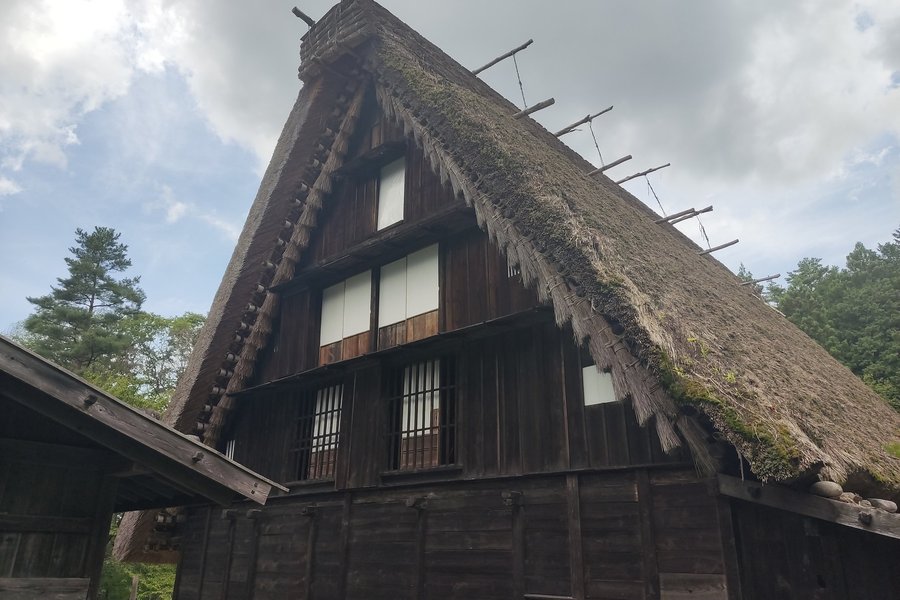
Time of the visit: august the 18th,2025
After some days in Takayama I took an early bus to Shirakagawa/Ogimachi where I put my baggage in one of the bus station's lockers.I had more than 6 hours time before my bus left for Kanazawa.
Shirakagawa is a popular place for organised bus trips for foreign visitors,mainly Chinese ones.
The town was overcrowded with tourists and felt more like a Disneyland village than a still inhabited country hamlet.
I decided to climb to the Ogimachi Castle observation deck first. My maps.me map showed me a small side path leading up, which was steep but easy to navigate. Once at the top, I saw a sign warning people to avoid this path because a bear with her cubs had been found there at 9:00. It was about 10.00.
The observation deck was already full with tourists taking pics or selfies or buying souvenirs.
From there, you get a good overview of the town. Then I followed the crowd down into the village, where I visited various historic houses( in the Gassho-zukuri style), as well as a small museum. The entrance fee deterred many Chinese tourists, so that the historic houses were relatively empty.
I also visited the Myozenji Temple and the Hachiman Shrine (both were closed).There, I came across a resting snake, of which I took a few close photos. I later learned that it was a mamushi, the most common venomous snake in Japan.
Before coming to Shirakagawa, I had already …
Keep reading 0 comments
The title of this WHS could be a little misleading at first glance, as Shirakawa-go and Gokoyama denote the regions, the names of the three inscribed villages are Ogimachi, Suganuma, and Ainokura. For the largest village, Ogimachi and Shirakawa-go seem to be used synonymously, probably because it is the most popular tourist attraction in the region.When I was planning the itinerary for my trip to Japan in September 2019, one of my first decisions was to stay a night in one of the traditional Gasshō-style houses. I actually wanted to book an accommodation in Ogimachi, but it ended in one night in Ainokura.
The three WHS villages are located in the narrow valley of the Shōgawa River, once a remote area, today fully developed for tourism and accessible by bus or car. I arrived in Ainokura in the afternoon by bus from Takaoka. Ainokura (photo) is the northernmost of the three villages, about 20 of the Gasshō-zukuri houses have been preserved there. It is a picturesque location: the thatched houses between small rice fields, surrounded by forests and high mountains. However, this applies to all of the inscribed villages.Gasshō means "hands folded in prayer" and alludes to the steep roof, which makes the snow easier to slip off and the construction better withstands the harsh weather in winter. This roof construction also has other advantages: it provides a lot of space in the attic. The Gasshō houses usually have three or four floors, the residents lived and worked on …
Keep reading 0 comments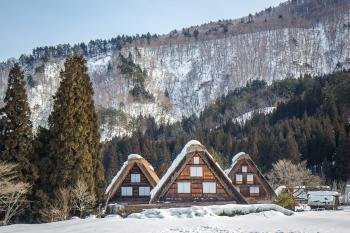
I loved Shirakawa-go and had a good length of time to explore it. Many people come in just for the day and walk around and go to the shops. I was lucky enough to do a home stay and spent the night in one the houses with a family. It was fantastic to not only see one of the houses from the inside, but also experience what it would be like to live in one.
I was here during winter and the snow and the roofs is so beautiful. I imagine the town has a really different look for each season - you could go four times in a year and see such different views.
Keep reading 0 comments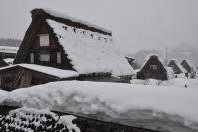
Deep in the scenic valley of Japan Alps, but easily accessible by highway, was the beautiful village of Shirakawa-Go, a wonderland of beautiful landscape with traditional farmhouses built in the style called Gassho-Zukuri, a steeply thatch roof house to prevent snow accumulation. The houses were really unique and different with mainstream Japanese architecture which cannot be found in other region of this country.
Since the farmhouses were designed for winter, I decided to see the village in the best time of the year, February when the snow was heaviest, and my decision was correct, the whole village was liked a fantasyland with the unique Gassho-Zukuri roofs emerged from the white sea of snow. The houses were really big and beautiful, and the snow made them looked more unbelievable to be existed.
The village was well prepared for tourism, locals made many cute snowmen for photo spot while in the souvenir shops were packed with hundreds of gifts made in the shape of Gassho-Zukuri. After the village I went to the famous viewpoint to see the postcard view of the village, and the view was just amazing and should be seen by everyone. Then I continued my trip to Shirakawa-Go-no-Yu, the traditional hot spring bath hall, to sample the experience, the hot spring and the river view from outdoor bath were really good.
I really enjoyed my trip to Shirakawa-Go; the village in winter was exceeding my expectation and was one of the highlights of Japan apart from …
Keep reading 0 comments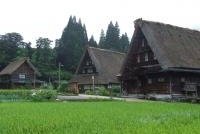
I too visited Ogimachi village in Shirakawa-go by taking the bus from Takayama. While Ogimachi was quite large and had many gassho houses, some of which I went inside to inspect, it was also very crowded and touristy.
From Ogimachi there are other buses that travel to Takaoka, and on the way stop at the other two villages, Ainokura and Suganuma in Gokayama, that form part of this WHS. They are equally authentic, but are much smaller and attract far fewer visitors than Ogimachi.
Keep reading 0 comments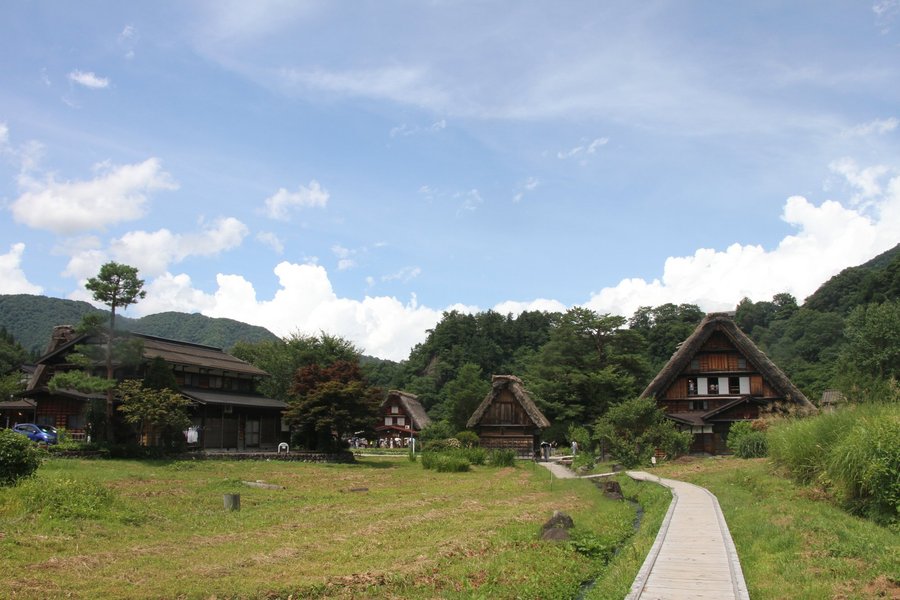
The first impression that I had with Shirakawa-gou was from a picture I saw on the internet. It feeled just too beautiful to be real. Then I did a lot of research online about this picturesque place; and actually went visiting in November 2005.
Its purity and tranquility can really ease a person's mind. You can also enjoy different scenery when visiting in different seasons.
I will go visit again and again if I had time; and really soak in the true beauty of Shiragawa-gou.
Keep reading 0 comments
If I can only select one farming village to go in Japan, I must select Shokawa-village. I went there in 1999 but taking 2.5 hours bus from Takayama. I arrived there at night and stayed in a homestead. I could see nothing inside the village at night. In the next morning, when I opened the Japanese window-door from my room. I see many Gassho-zukuri houses just outside! The houses lies inside the valley of the Japan Alps. It likes a picture more than a village. It might be more convenience to visit the villages as a highway was opened from Nagoya to Toyama.
Keep reading 0 comments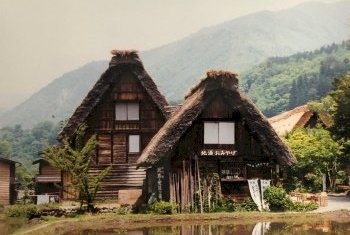
Within the valley, I visited the village of Ogimachi, a two-hour bus ride from Takayama in the middle of the Japanese Alps. There quite a lot of the Gassho-zukuri houses can still be found together.
Although it was packed with Japanese tourists, I liked it a lot. The environment is totally unlike the stereotype Japan. In a way, the scene remembered me of Bhutan, where in the green valleys also this kind of big houses annex farms still stand (however without the characteristic thatched roofs).
Keep reading 0 comments
